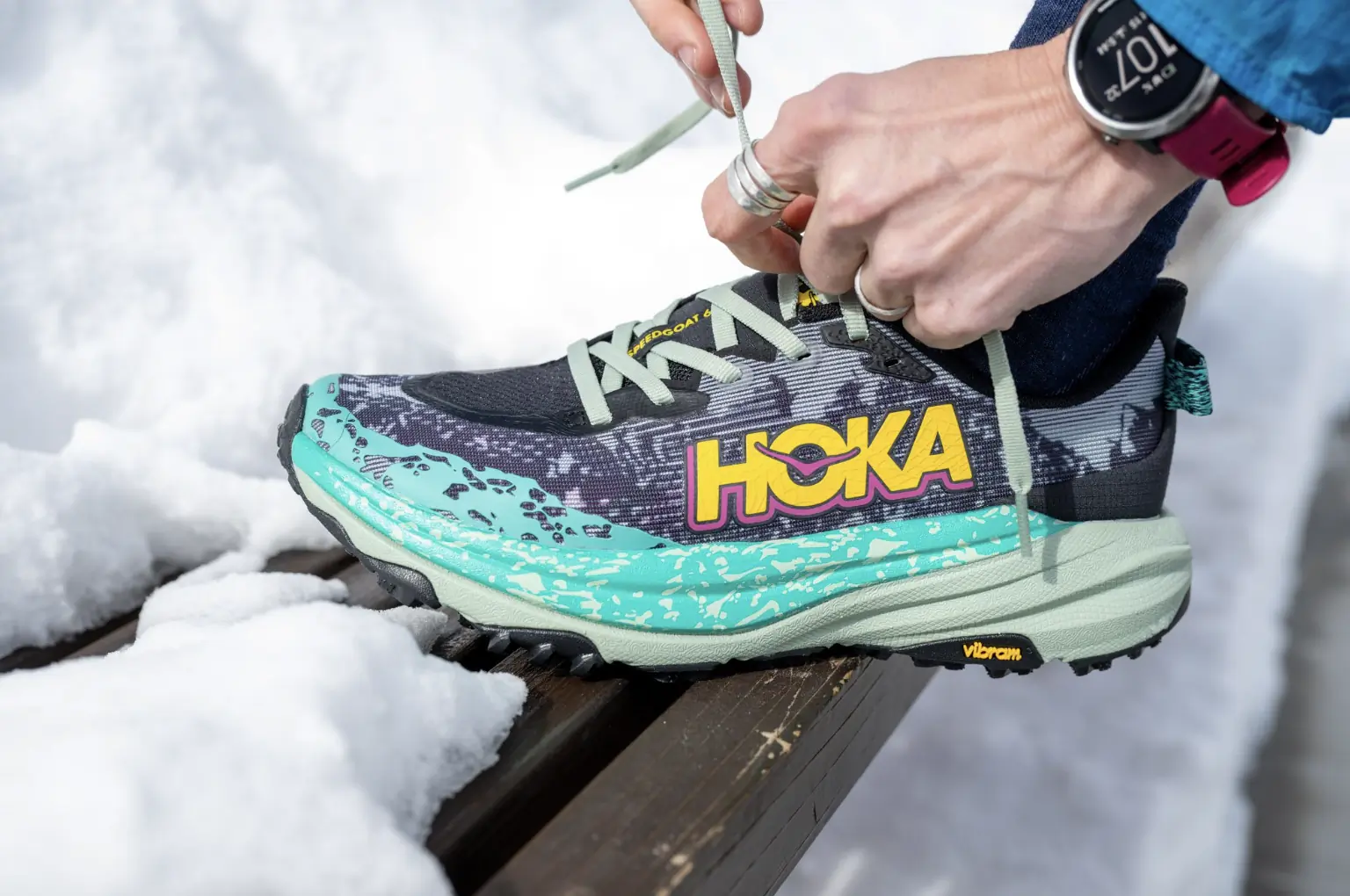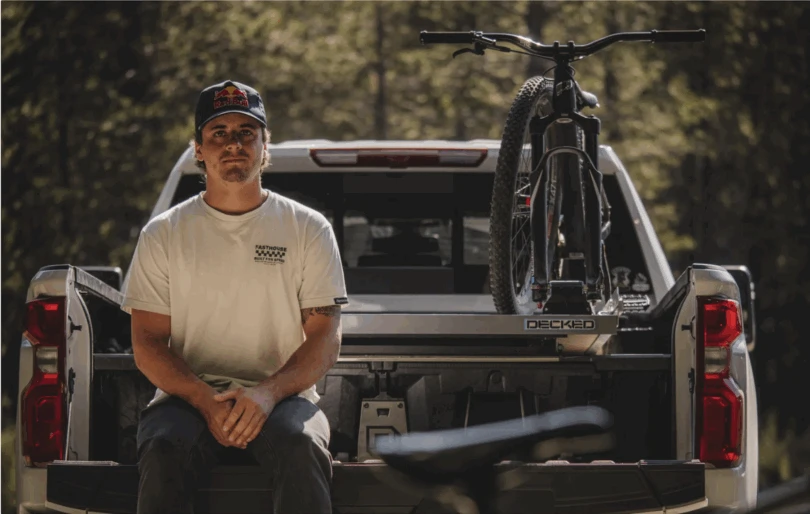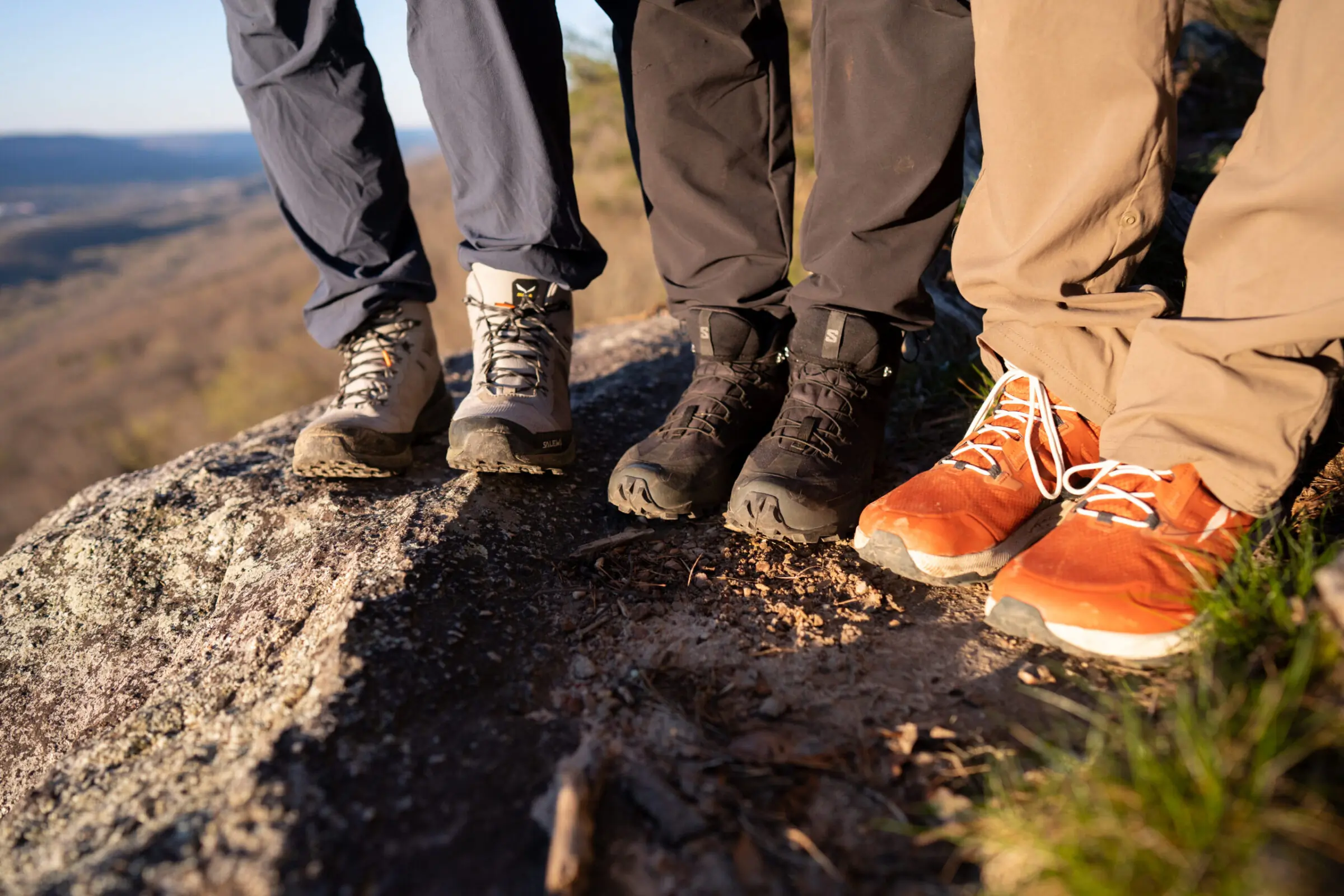In 2014, I hiked a 150-mile section of the Continental Divide Trail. It was my first long-distance hike, and I had a lot to learn about footwear.
I started that hike in women’s hiking boots and ended it in trail runners. Since then, I’ve spent most of my time outside in trail runners.
I also have a pair of burly, stiffer boots for days on which trail runners just don’t cut it. I’ve had the same pair for nearly 7 years. I don’t wear them often, probably less than 10 days a year.
But they’re perfectly broken in and reliable in moments of need. I dread the day I have to replace them; boots are just a different kind of commitment.
And as GearJunkie’s Hunt & Fish Editor, I’ve had the privilege of having a lot of shoes and boots to try out. Too many, really. I hike on trail and off. I sidehill and scramble. I pack both heavy weight and no weight at all. And I have the privilege of knowing a lot of folks who do similar stuff.
Here’s what I’ve gleaned from my own time outdoors and the experience of the wide variety of highly knowledgeable outdoors folks I’m lucky enough to have in my circle.
Shoes: The Pros

When talking about shoes in relation to hiking, I’m typically talking about trail running or hiking-specific shoes. I certainly have friends who hike in Chucks. But that ain’t most of us.
We can make a slight exception for hiking-worthy sandals like Tevas or Chacos here. Many people simply sandal up for long hikes when it’s hot. But I’ve busted my toes on rocky hikes, and it sucks. Protecting your feet can make the difference between a very unpleasant hike and a great one.
Exceptions aside, a good pair of hiking shoes boasts a few things that most boots can’t beat. The first is a lack of weight. And for long distances, cutting weight on your feet is a literal godsend.
If you have joint issues or weaknesses in your legs, cutting weight is essential for comfort. I’ve had serious knee issues for years, and I was able to keep more active thanks to uber-plush, lightweight hiking shoes.
Another thing that I love about trail runners is their ability to dry out quickly on the fly. Mesh, GORE-TEX, synthetics, and more combine to either keep water out or dry very quickly.
This also lends itself much better to keeping feet aired out on hot days. I wear summerweight merino socks and I haven’t had a blister in years with this method.
I’ll add that I personally don’t limit hiking shoes to low-profile sneakers. Most brands offer a wide variety of mid- or high-top sneaker-style “boots.” If a boot looks like a sneaker, walks like a sneaker, and is priced like a sneaker, it’s a damn sneaker.
Shoes: The Cons
Most folks will talk about the lack of ankle stability when they talk about their reluctance to buy hiking shoes or trail runners.
I’ll counter this by saying that a boot doesn’t necessarily guarantee that stability. I’ve rolled ankles in both boots and shoes. However, when I wear a sneaker that gives my foot what it needs support-wise, I don’t tend to roll my ankles. I recommend an ankle brace if you have particular issues; it will provide legitimate support.
That said, most shoes do lack stiffness. This proves difficult if you’re an off-trail hiker who might sidehill occasionally to get from one place to the next. It can also be problematic for folks who need a stiffer, more supportive last rather than a plushy, shock-absorbing impact.
And although you can find many affordable options, I don’t expect my trail runners to last more than a summer-to-fall season. Most companies say their shoes will go about 500 miles. But if you’re an active mountain nerd like me, I’d say terrain dictates that wear more than mileage does.
Boots: The Pros

As much as I love my sneaks, I do love boots. My boots come out when my needs change. This is typically when I’m going to be spending more time off-trail than on-trail, when it’s colder out, and when the terrain might dictate a bit more protection than your average hiking shoe.
And of course, boots run the gamut, and they do so a bit more variably than shoes.
A tall, stiff boot will provide exceptional support off-trail or in rocky terrain. In addition, an insulated tall boot will keep your feet warm while keeping rocks out.
Some folks prefer a stiffer boot when packing heavy weight as well. Added support and highly defined traction could be an actual lifesaver in high alpine, rocky, and snowy terrain.
Boots also allow for a wider variety of specialized pursuits. For example, mountaineering and hunting-specific boots tackle a lot of issues that a shoe simply can’t solve off the tamer terrain they’re built for. And their variety of materials is wider, from leather to highly technical synthetics.
Boots are really the 4×4 of the footwear world. If you’re going off-trail for any reason, boots are likely in your future.
Boots: The Cons
You can spend $200 on a decent hiking boot or upwards of $500 for a boot that will more specifically tackle the demands of intense terrain.
The specialty nature of boots lends them to be a bit more of a pocketbook wipeout than your average hiking shoe. But, the higher quality you pay for generally lasts a lot longer than your typical shoe.
Most boots are heavier than shoes, and they tend to hold in more heat. Denser materials lend foot and ankle support, but they’re often thicker and not as breathable.
Boots also require a more specific break-in period. If they don’t require a break-in period, they’re probably what I’d call sneaker boots, and you can expect that their long-term durability will not be impressive. Blisters are not abnormal in the break-in period, so keep sessions short in the beginning.
A general rule of thumb that I keep is to walk 30 miles in my boots before committing them to a hard day outside. This can be wearing them around the house, to the grocery store, and on general errands. If you’re style-conscious, this can be a dramatic but necessary trip to the dark side of street fashion.
The Gear That Complements Both Boots and Shoes

Beyond shoes, you can protect and improve your hikes with a bit of leveled-up gear that will add support, comfort, and consistency to your time outside.
In thinking about stability, the number one item that will absolutely aid in your quest to avoid rolled ankles isn’t a pair of boots; it’s a pair of trekking poles.
If I’m hiking anything more than a few miles, the poles are coming with me. If I’m packing weight, the poles are coming with me. If the terrain is sketchy, I’m bringing my poles. And if I don’t need them, I can pack them down and stick ’em in my pack for later.
Think of it as adding an extra pair of legs to your repertoire. As a carrier of trekking poles, you instantaneously become a mountain mule. Escape your bipedal ways. You won’t go back.
Another level-up for your hiking routine is to add merino wool to your sock drawer. And yes, you can wear it year-round. Sock brands like Swiftwick and Darn Tough make extremely lightweight wool socks that will take the swamp out of your feet.
If you have blister problems, switch your socks first. Much less expensive and often an easy fix.
The final addition that changed my hiking routine has been the use of Superfeet insoles in the majority of my footwear. They go in my hiking shoes, my hunting boots, my cowboy boots, and everything in between.
If you need ample foot support, don’t expect to get it from your shoe without an upgrade. Orthotics have gotten a lot better and more affordable. Save yourself the agony and invest in the right insole. It. Is. Worth. It.
Should I Hike in Boots or Shoes?
A good pair of footwear provides the necessary amount of support, protection from the elements, and comfort that allows them to be forgettable. Thanks to technologies like waterproofing, injection molding, synthetics, and more, we live in a time where footwear has never been so variable and personalized.
The good choice is the one that works best for you. If you’re day hiking on trails, a hiking or trail running shoe is probably your best bet. If you’re heading into cold or wet conditions, getting off trail, or in need of serious stability, shell out the extra bucks for a nice pair of boots.
And if you’re like me, you might need a few options in your closet. Personally, I invested money and the breaking-in time on my boots 6 years ago. And since I use trail runners for most of my outdoors walking, my boots take less of a beating, and they’re there when I need them. Win-win.










